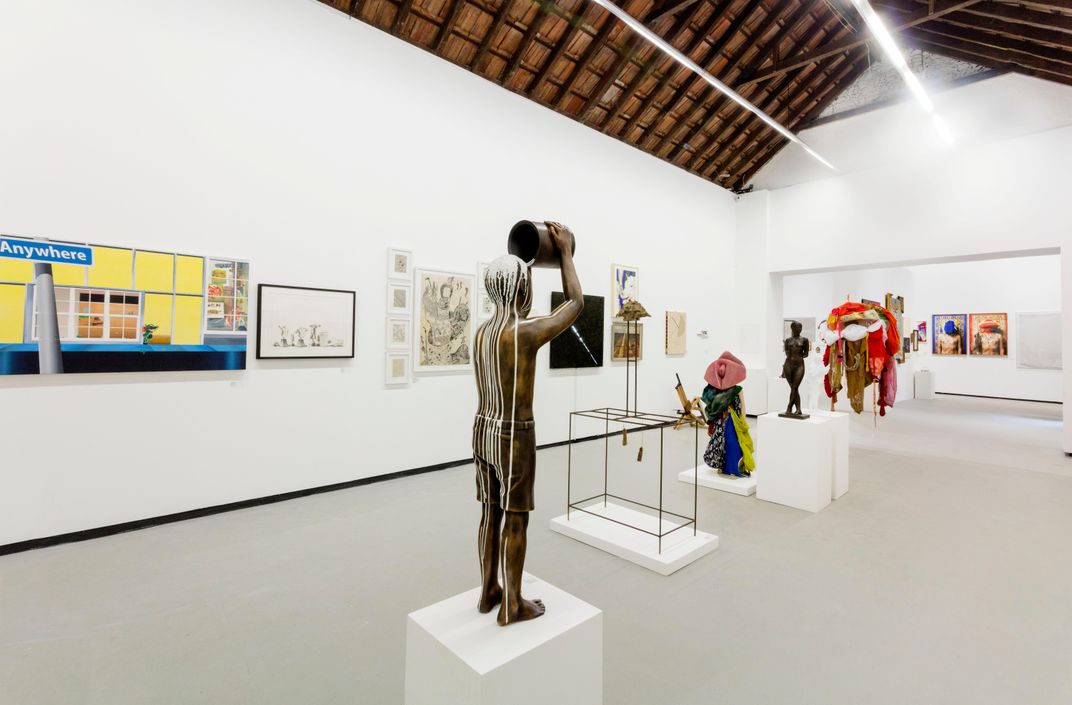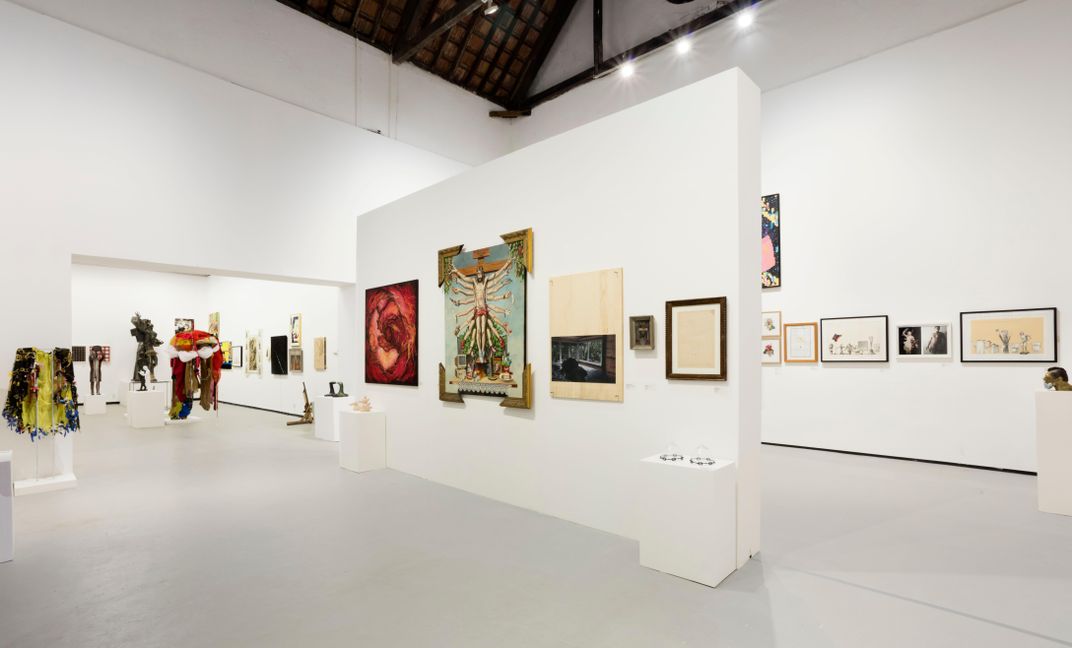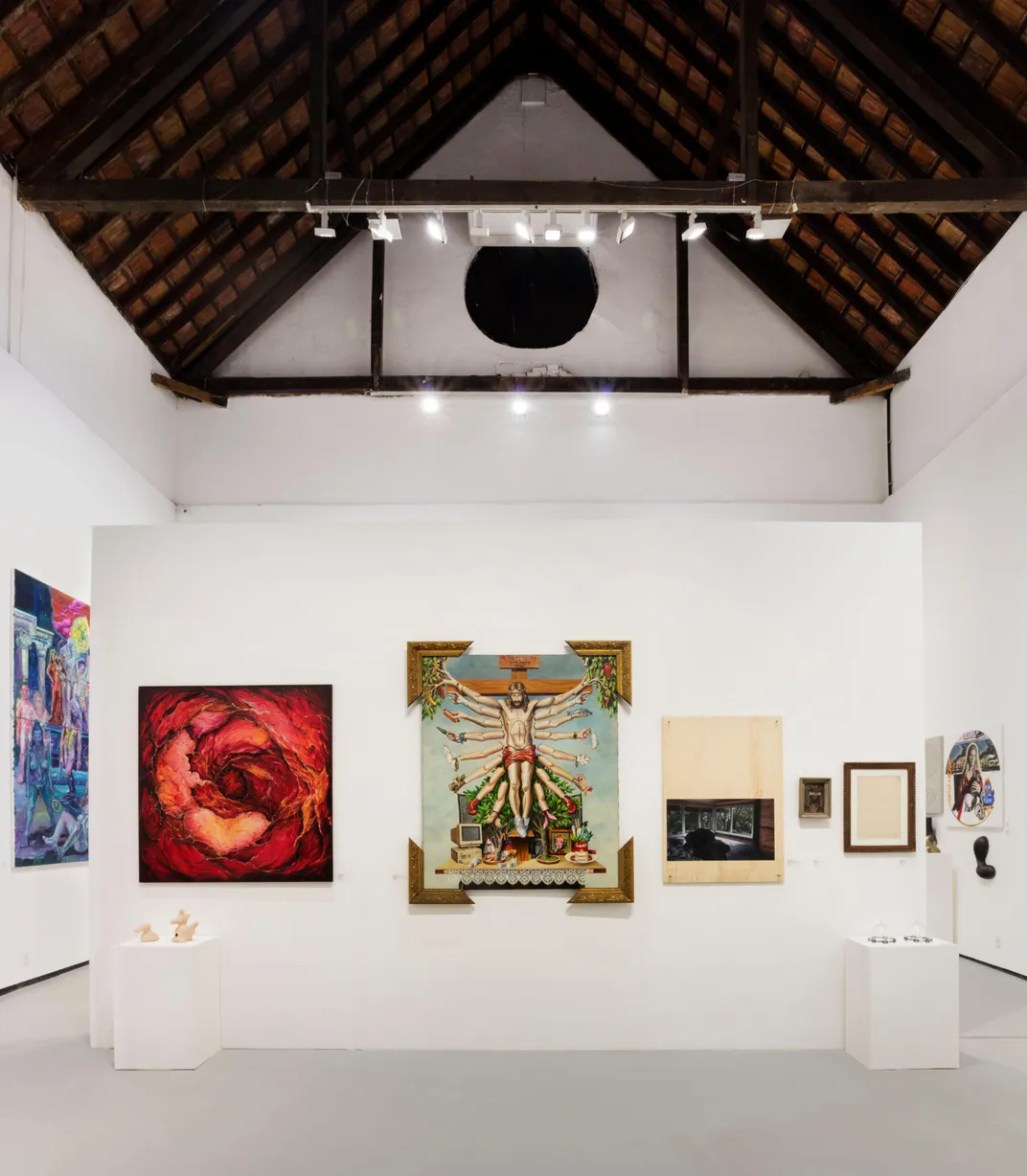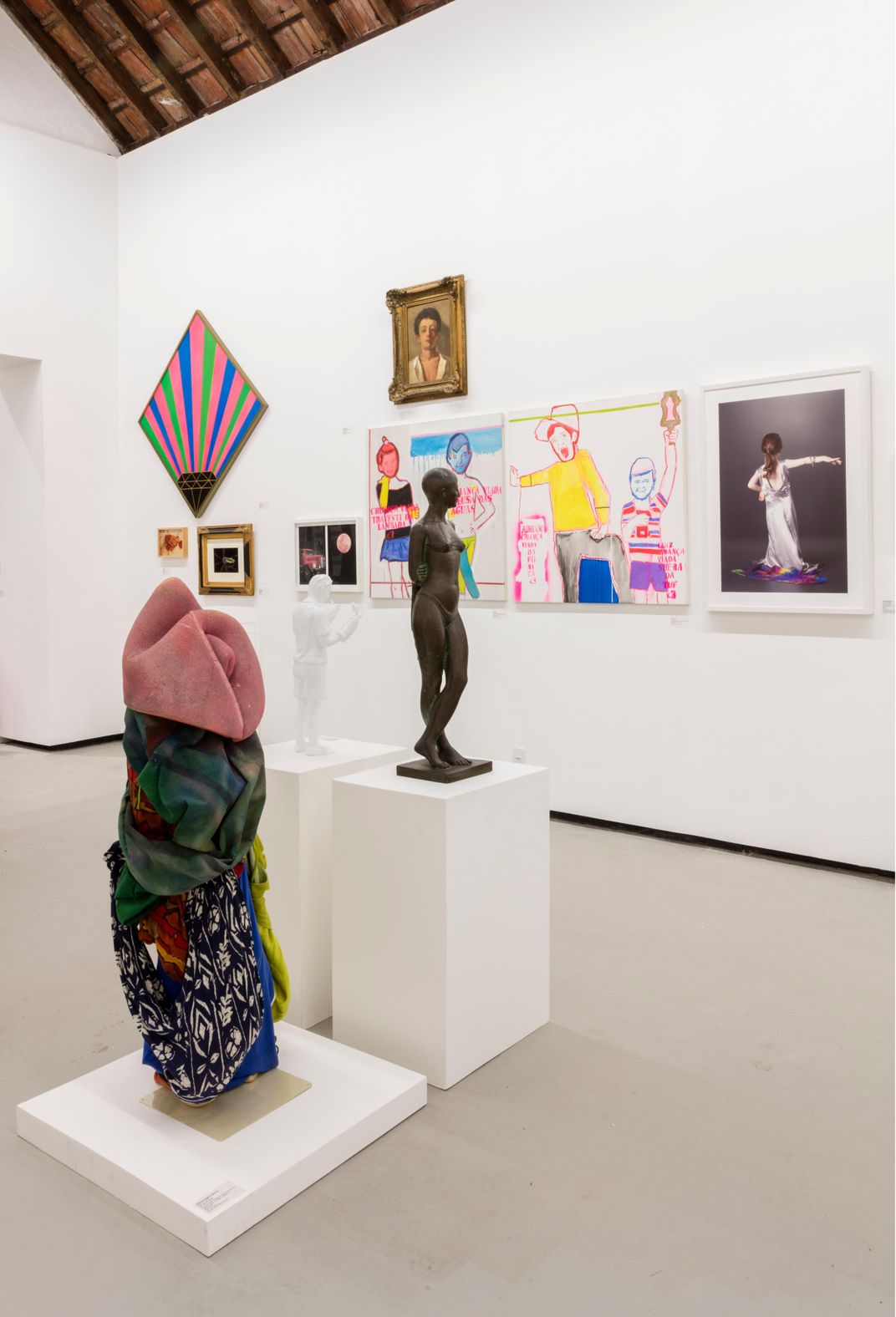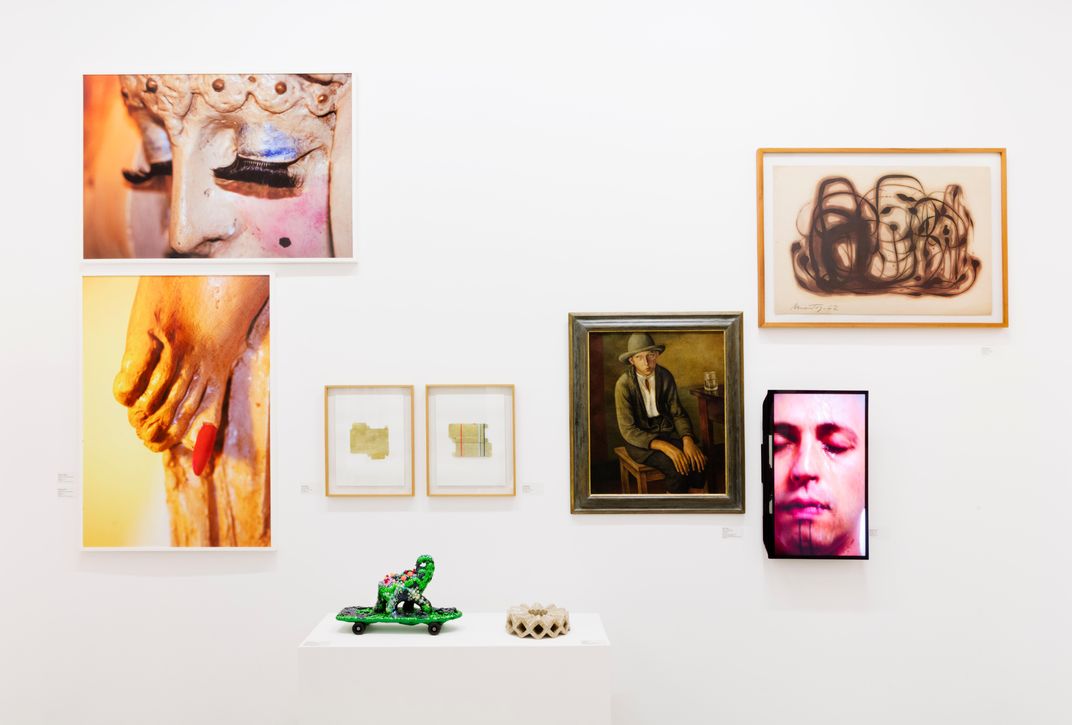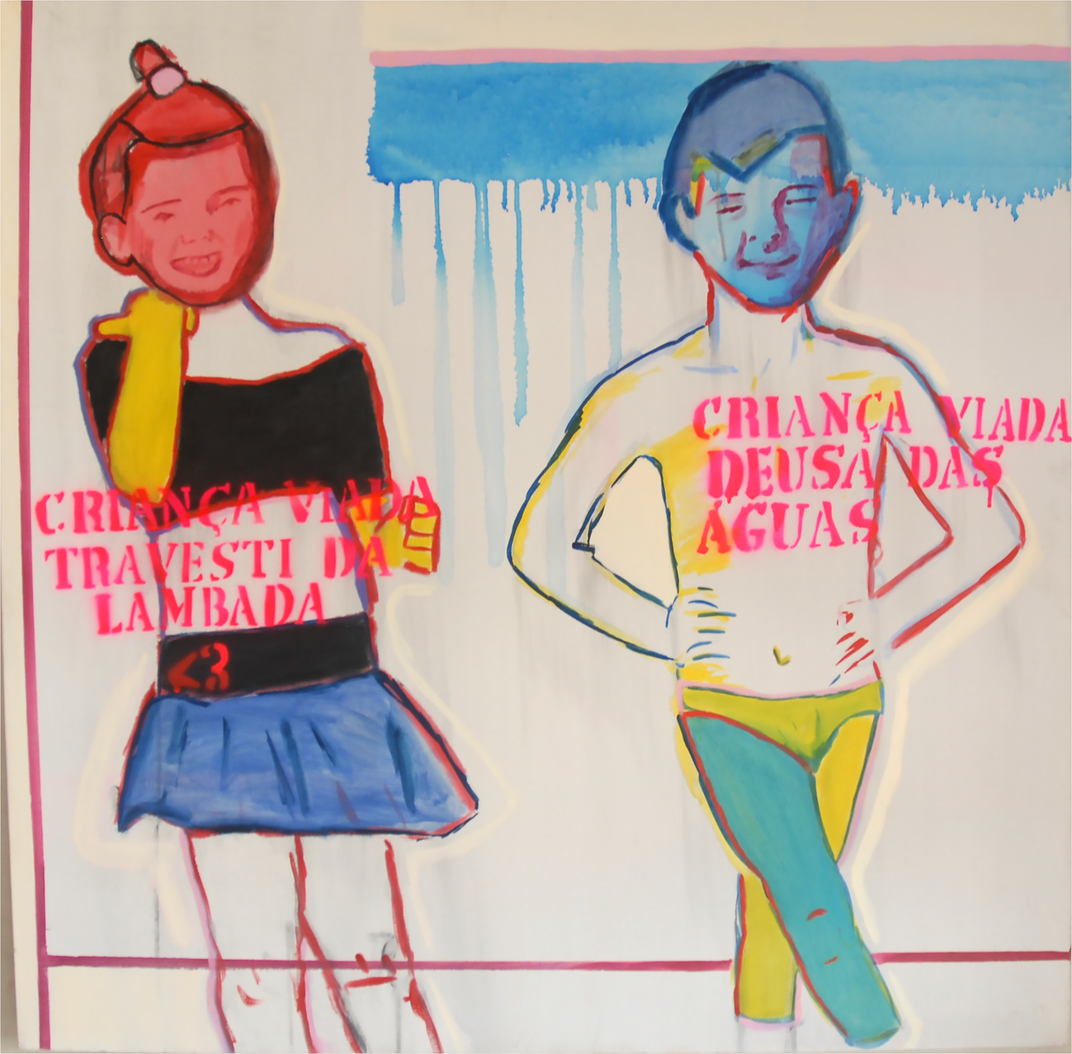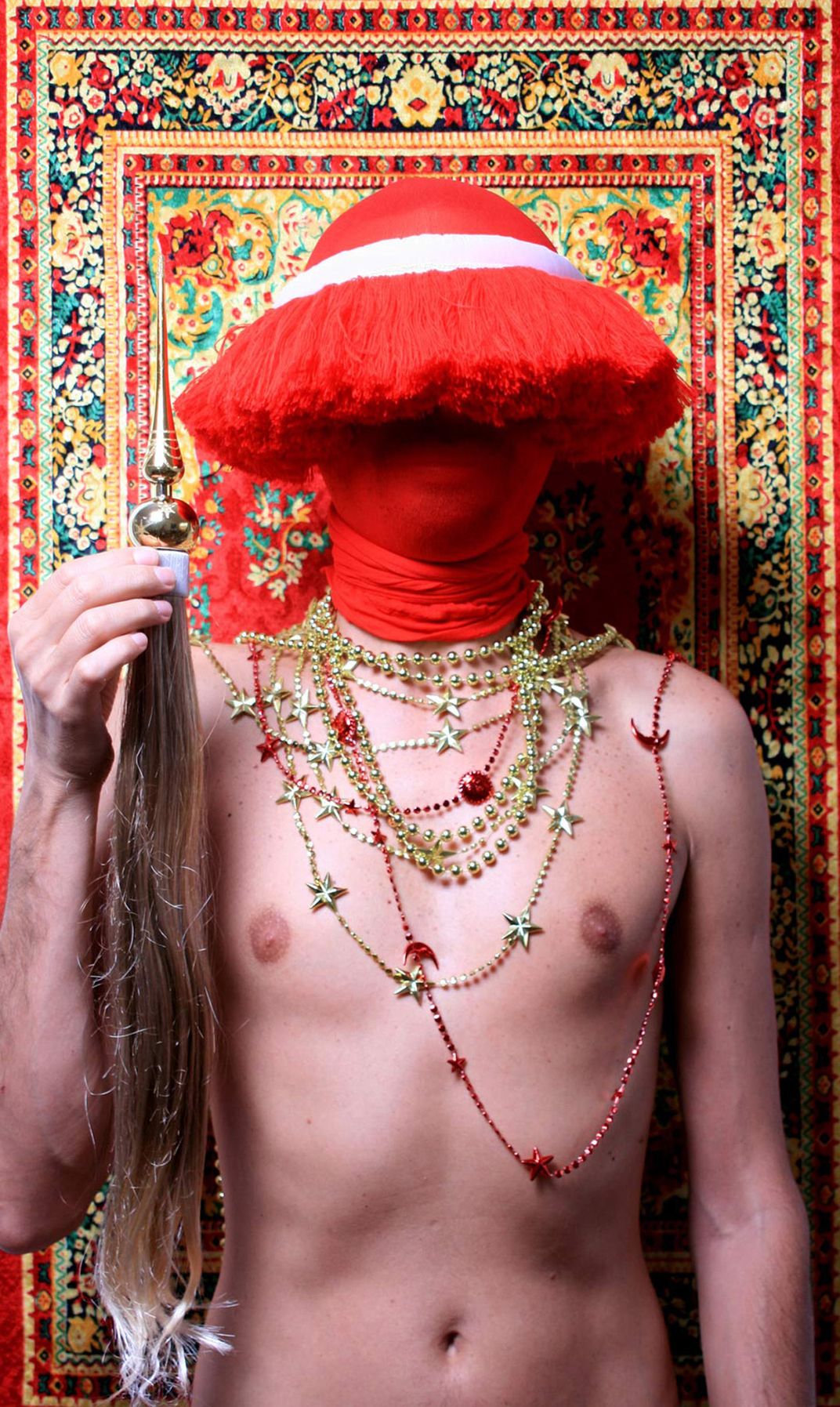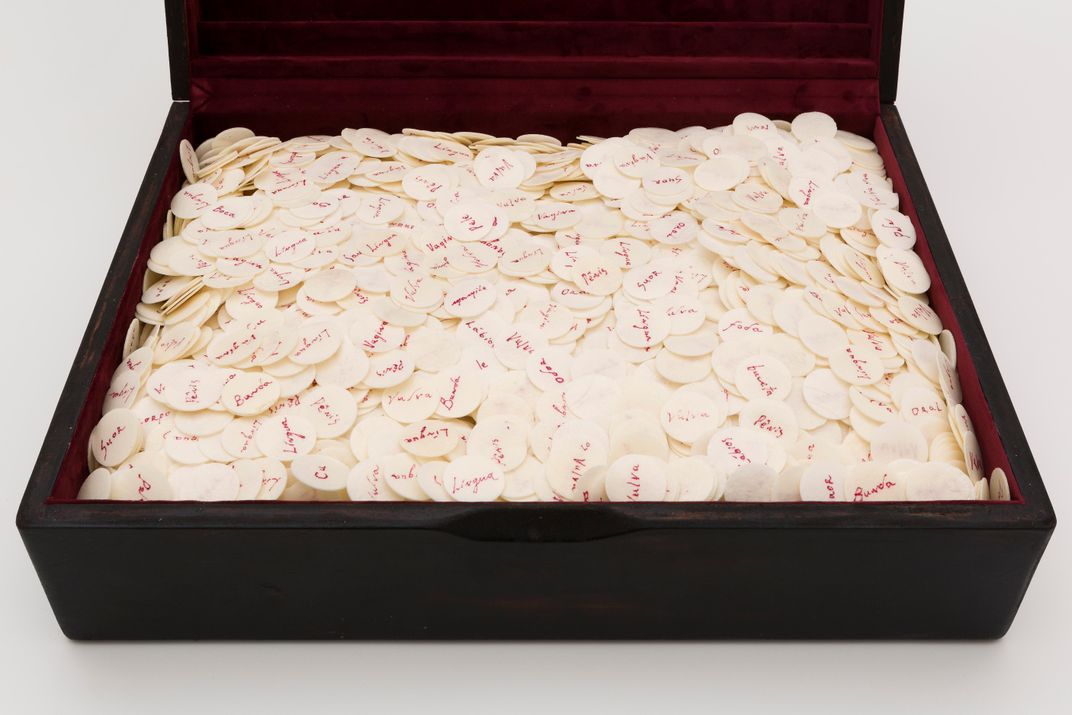Shuttered Amid Protests Last Year, Queer Art Exhibition Reopens in Rio
A successful crowdfunding campaign helped bring “Queermuseu” back to life
Last year, Brazil’s first major exhibition of queer art launched in the city of Porto Alegre—and was swiftly shuttered amid protests by a right wing group. But over the weekend, as Ivy Olesen reports for the Art Newspaper, “Queermuseu: Cartographies of Difference in Brazilian Art” reopened at the School of Visual Arts in Rio de Janeiro’s Parque Lage, drawing record-breaking crowds.
The show, which features 214 works by 82 artists, originally appeared at the Santander Cultural center in Porto Alegre, which is owned by the Santander bank. “Queermuseu” drew the ire of the right-wing Free Brazil Movement (known as the MBL in Brazil), and protestors began harassing museum-goers inside and outside the exhibition.
Among the works that the group contested were a depiction of the Virgin Mary cradling a monkey, portraits of children stamped with the Portuguse words for “transvestite” or “gay child,” and a depiction of a man having sex with a goat. Critics accused the exhibition of promoting pedophilia, beastiality, pornography and blasphemy, and Santander ultimately closed “Queermuseu” around one month before it was scheduled to end.
The move sparked an outcry in Brazil; more than 72,000 people signed a petition calling for the show to be reinstated, and more than 1,000 artists and art professionals signed a letter condemning the closure of “Queermuseu” and a series of other incidents that they described as censorship by “right-wing militants, segments of the neo-Pentecostal churches, some politicians, members of the state, the police and the Public Ministry.”
VIDEO: The 'Queer Museum' art exhibition is reopening in Rio de Janeiro, after being shut down last year following pressure from conservative groups #QueerMuseu pic.twitter.com/OoBu7cq2Zj
— AFP news agency (@AFP) August 17, 2018
“Such arrogant fundamentalists shy away from reading the works more closely and hunt for signs of indecency, levity, pornography and heresy—there is no intellectual debate, no questioning, only violence and intolerance,” the letter stated.
According to the Agence France-Presse, there was talk of moving “Queermuseu” to the Rio Art Museum, a public institution. But Marcelo Crivella, Rio De Janeiro’s mayor and an Evangelical pastor, shut those efforts down. So a crowdfunding campaign was launched to bring “Queermuseu” to the School of Visual Arts in Parque Lage. More than a million reais (around $250,000) were raised, allowing the show to reopen for a month with free admission.
The rebooted “Queermuseu” is “almost identical” to the show that was closed in Porto Alegre, reports the AFP, and features the same works that made it the subject of controversy last year. Security guards have been recruited to keep watch over the exhibition, but the possibility of demonstrations did not deter visitors from coming to see the show. In fact, Fabio Szwarcwald, director of the School of Visual Arts in Parque Lage, tells Art Newspaper’s Olesen that “Queermuseu” brought in around 8,000 people over the weekend, a record for the institution.
Gaudêncio Fidelis, the show’s curator, tells the AFP that he hopes “for an enormous number of visitors, but not because of all the controversy.”
“People will see that it was a false premise, a fabricated polemic,” he adds. “Society will be able to see the true nature of the exhibition.”
